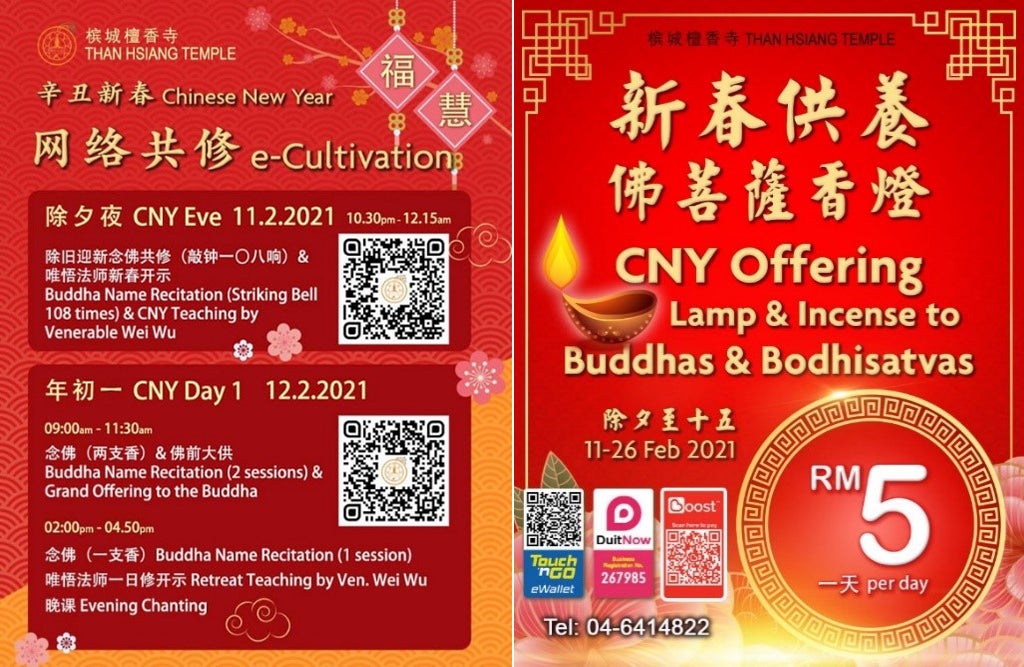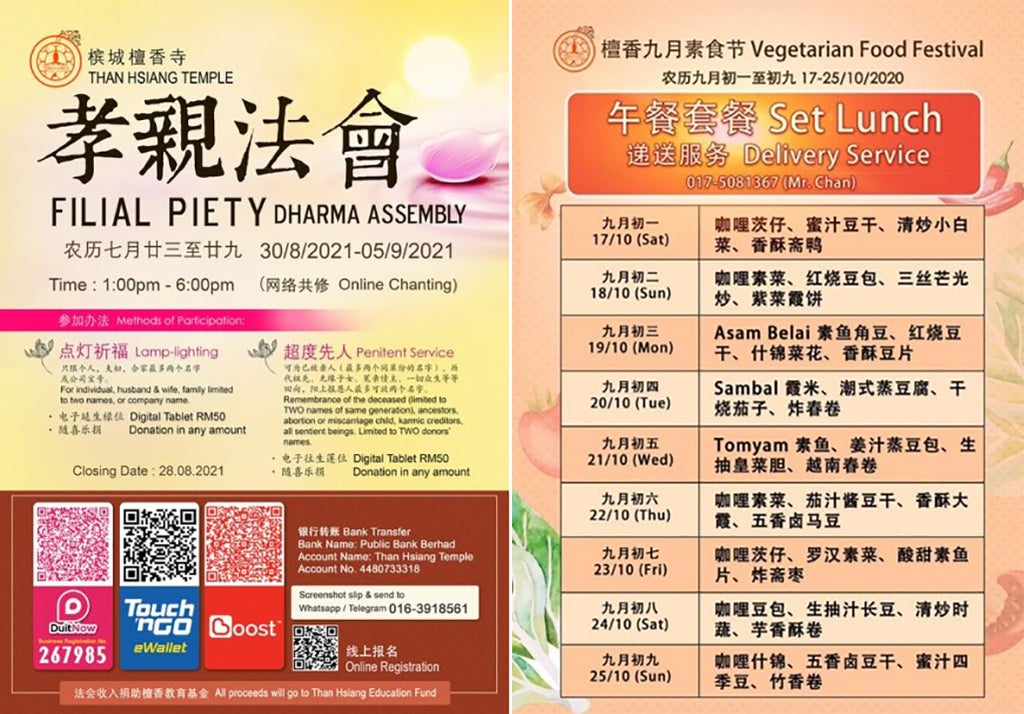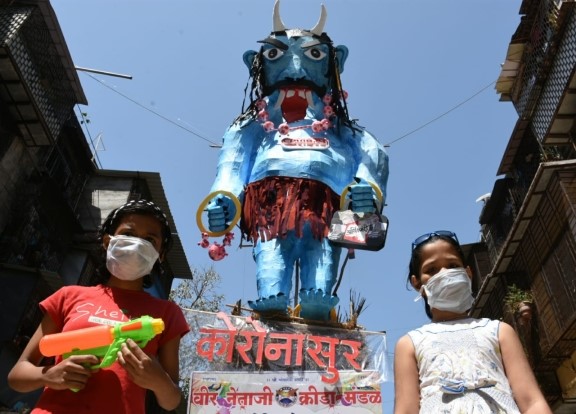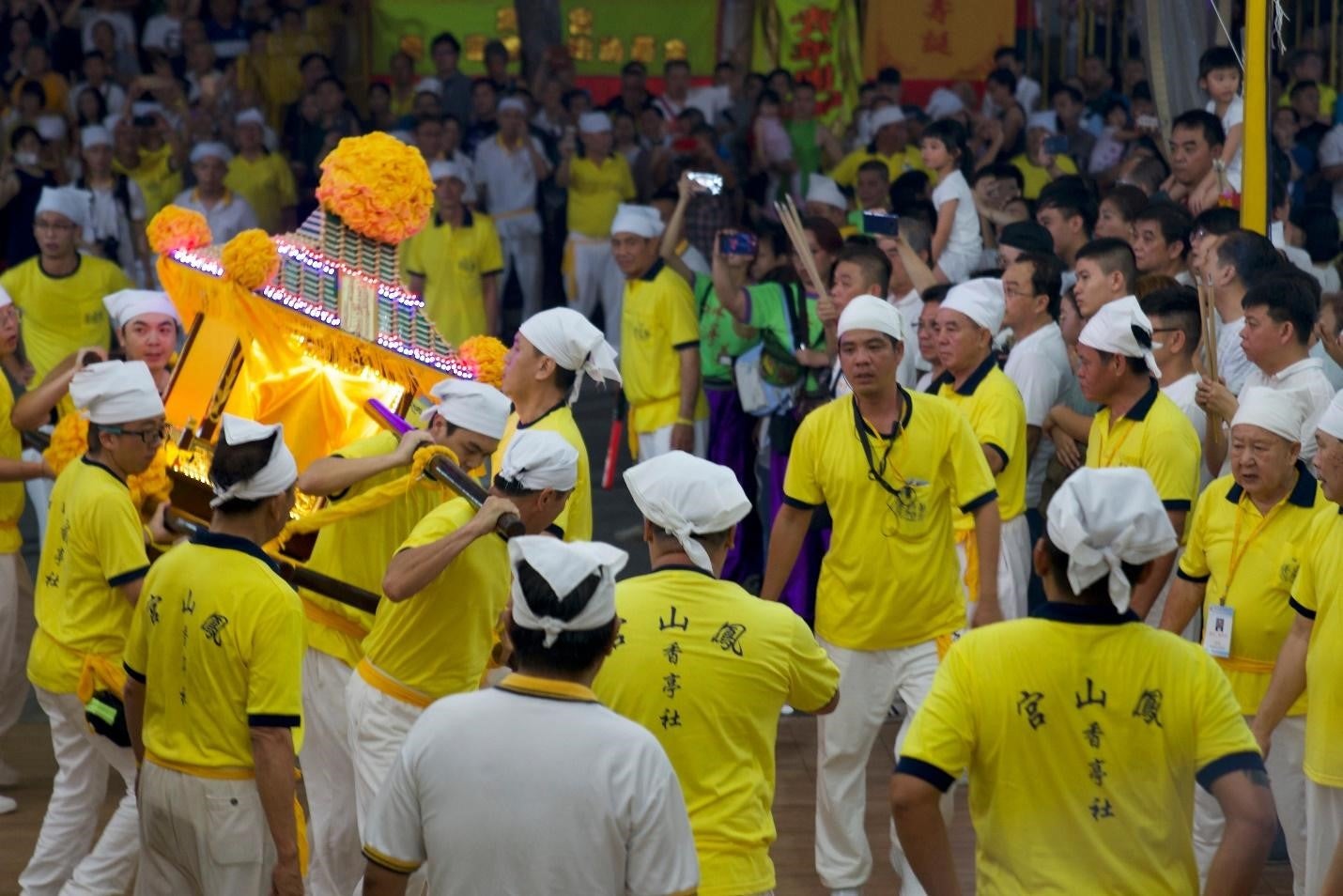The Operation of a Buddhist Temple in Malaysia during COVID-19: A Case Study in Than Hsiang Temple
contributed by Fu Yek Ming, 5 August 2021
Due to the unprecedented Covid-19 pandemic, the Malaysian government has implemented the Movement Control Order (MCO) since 18 March 2020 to minimize the spread of Covid-19. The direct impact of MCO on the Buddhist temples in Malaysia is the halt of religious activities to the public. Most Buddhist organisations are facing challenges to continue the efforts in the propagation of Buddha’s teachings. By using Than Hsiang Temple as a case study, this blog article aims to show how a Chinese organisation in Malaysia responded to the new challenges during the Covid-19 pandemic.
Than Hsiang Temple (檀香寺) is a homegrown Buddhist organization in Malaysia, which was established in 1990 with its significant conviction, “The young to learn, the strong and healthy to serve, the aged and sick to be cared for and the departed to find the spiritual destination.” Under the leadership of the founder, Venerable Wei Wu (1949-), Than Hsiang Temple runs various activities in education, social welfare and cultivation to promote Buddhism. The openness towards modern technology and good leadership in management skills of Wei Wu has brought changes in the operations of Than Hsiang Temple during the pandemic.
In the first stage of MCO, all religious-related activities were postponed indefinitely if not cancelled. During the second stage of Conditional MCO, the local government has issued a Standard of Procedures (SOPs), demanding that everyone who enters the temple must wear masks, sanitise hands, have body temperature taken and maintain social distancing. With the restrictions on the participation in religious activities in the third stage of Recovery MCO, the usage of social media and online platforms has emerged as a new tool to interact with devotees.
Before the outbreak of the pandemic, Than Hsiang had already been engaging with new technologies. Than Hsiang has started its website (http://thanhsiang.org/ch/) in 1996. Moreover, the Than Hsiang Like Page on Facebook was created in 2011 (https://www.facebook.com/thanhsia). Than Hsiang also started its TV Channel on YouTube in 2013 (https://www.youtube.com/channel/UCoI49uj-hNdHURBW0cizKrA) and has 1.25K subscribers up to June 2021.

Figure 1: Screenshot Than Hsiang TV Source: https://www.youtube.com/channel/UCoI49uj-hNdHURBW0cizKrA
Besides the usage of email, WhatsApp, YouTube and Facebook, the temple has explored Telegram (https://t.me/thanhsiangtemple) to disseminate information about the latest “cultivation” news and temple activities during the pandemic. Venerable Wei Wu during the online interview mentioned that the cultivation sessions (Gong Xiu共修) in Than Hsiang Si normally attract a large crowd. So, Than Hsiang Si started to experiment with online cultivation via Zoom with live broadcast via Facebook and Youtube. “With the help of the in-house audio-video team, Than Hsiang Si gradually learned to produce online sessions with very good audio and visual quality. The number of participants is almost double compared with before. This has shown that social media and online platforms can be very useful tools during a pandemic.” Says Venerable Wei Wu.
Following the good responses in the weekly cultivation session, Than Hsiang Si implemented online Zhunian (助念), the assistance chanting during the funeral wake. More than 80 remote chantings have been performed during MCO. Moreover, some important festival celebrations and dharma assemblies are conducted online, too. The devotees can participate in the chanting simultaneously with the monastic masters. Regarding the responses from the devotee, Venerable Wei Wu replied, “All these turned out to serve our members and also more newcomers started to join including elderly who have their grandchildren to help them to log on to the online activities.”

Figure 2: The poster of e-cultivation during Chinese New Year 2021
Source:https://www.facebook.com/thanhsia/photos/a.647394608642136/3676475455734021/
Figure 3: The poster of Lamp and Incense to Buddhas & Bodhisattvas by e-payment
Source: https://www.facebook.com/thanhsia/photos/pcb.3663921623656071/3664165066965060/
Besides the “e-cultivation” activities, Than Hsiang Temple also provides services of offering incense and lamps to Buddhas and Bodhisattvas. The offerings can be made with RM5 per day, by using the e-payment apps such as “Duitnow” or “Touch-n-go e-wallet”, or “Boost”. The donation can be done easily by online transaction with few clicks. Than Hsiang Si has expanded the options for members and the public to make donations online. The participation is open for lamp lighting and “Penitent” service during the Dharma assembly. The donation can be done by putting a digital tablet with RM50 or any amount.

Figure 4: Screenshot of online Filial Piety Dharma Assembly
Source: https://www.facebook.com/thanhsia/photos/a.319865448061722/4057349944313235/
Figures 5: Screenshot of Vegetarian Food Festival in October 2020
Source: https://www.facebook.com/thanhsia/posts/3390890360959200
Apart from that, Than Hsiang Vegetarian Restaurant has implemented food delivery services to cater for the South West District of Penang Island via Deliveryeat & FoodPanda Apps. During the Vegetarian Food Festival, the practice of nine days of vegetarianism at the beginning of the 9th Lunar month, advocated by local Chinese folk beliefs for the Nine Emperor Gods Festival, the Drive-Thru Counters were also set up to facilitate customers getting their food. In a good move towards e-commerce, the Than Hsiang Article Shop has set up the e-shop at Lazada (https://www.lazada.com.my/shop/e-sandalwood/) to provide a more convenient and safer shopping experience to purchase Buddhist paraphernalia and vegetarian products.

Figure 6: Screenshot of e-shop at Lazada Source: https://www.lazada.com.my/shop/e-sandalwood/
Moreover, the Mitra Welfare Centre provides empathetic counselling and social welfare support to those emotionally disheartened. The police recorded 468 suicide cases in Malaysia in the first five months this year, up from an annual total of 631 cases in 2020 and 609 in 2019 (Source: https://www.malaysiakini.com/news/582624). With the increase of suicide cases the counselling service is vitally important to provide mental comfort and support to the devotees. There is an increased need for counselling services in Than Hsiang Si. When the counsellors or the clients cannot go to the centre, Than Hsiang Si again tries the online option. The telephone hotline counselling used to be done on landlines, now available by using mobile numbers. The e-counselling service is offered via Zoom, besides telephone and email.
In education, to ensure that the teaching and learning process continues during the pandemic, home-based learning has been introduced until schools are safe to be reopened. Therefore, Than Hsiang Kindergarten and Sunday Dharma School have substituted traditional in-person teaching with online teaching via Zoom. Current debates in pedagogy suggest that the use of technology in education will eventually become an integral component of learning in the future.

Figure 7: Than Hsiang Sunday Dharma Class Orientation Day Source: https://www.facebook.com/photo?fbid=10216381634488340&set=oa.479419426769749
Than Hsiang Si is in the best effort to provide the services online. The temple put a well-rounded effort into providing aid to their Buddhist devotees and the general public during the pandemic. However, Venerable Wei Wu humbly admits that Than Hsiang Si is still in the learning process of providing services online. He expressed that, “I think that Christian churches and NGOs have made an earlier start to go online. However, 'better late than never!'.” It is a good start for Buddhist organisations in Malaysia to respond to the pandemic in an innovative way to continue its operations and interactions with devotees.
From above, it is evident that the operation of Than Hsiang Temple in Penang evolves along with the shifting conditions of the Covid-19 pandemic. Keeping up with modern technology is an inevitable trend in the development of Buddhism. The usage of social media and online platforms has emerged as a new tool to interact with followers and perhaps open more opportunities beyond the traditional ways of conducting Buddhist activities. However, the effect of the use of online platforms would require more investigation and future research.
Disclaimer: The views and opinions expressed in this article are those of the authors and do not necessarily reflect the position of the blog editorial team or the Asia Research Institute.
South Asia | Southeast Asia | East Asia | Other Places | Hinduism | Buddhism | Islam | Christianity | Other Religions
Fu Yek Ming, a PhD student in the Department of Chinese Studies, Faculty of Arts and Social Sciences, University of Malaya (UM). Her interest is in Buddhism, religious studies among Chinese communities and local culture in a multi-cultural society in Malaysia. Email: yekming@gmail.com
Other Interesting Topics
CoronAsur: Religion, senses and media at the time of the Corona-demon
As I write this post in the midst of the COVID-19 pandemic, our lives are being unprecedentedly forced into isolation and restricted mobility. Our socialisation of life and death is deprived of the communion of togetherness. ‘Lock-downs’ and ‘circuit breakers’ are muting and mutating the sonorous profile of our inhabited spaces. Days are strangely still and noiseless...
The Material, the Social, and the Viral: The Efficacy of Virtual Responses to Pandemic Times
I remembered laughing in front of the movie directed by Jack Neo, “I Not Stupid”, when an elderly lady was told that her son who was overseas could actually download and print a talisman to secure the blessings of the deity she was consulting. The deity through the spirit medium in the temple had written talismans but the lady was not able to send them to her son in time for his examinations. The assistant of the spirit...
Sites of Worship during the Pandemic – A Pedestrian Photo-essay from the Heartlands
In this photo-essay I curate and collage a visual narrative based on my experiences walking around religious sites in my new-old neighbourhood of Toa Payoh, a prototype Housing Development Board (HDB) town located in central Singapore. By ‘walking through social research’ (Bates & Rhys-Taylor 2017) and using pedestrian phone-photography, I initially set out...




